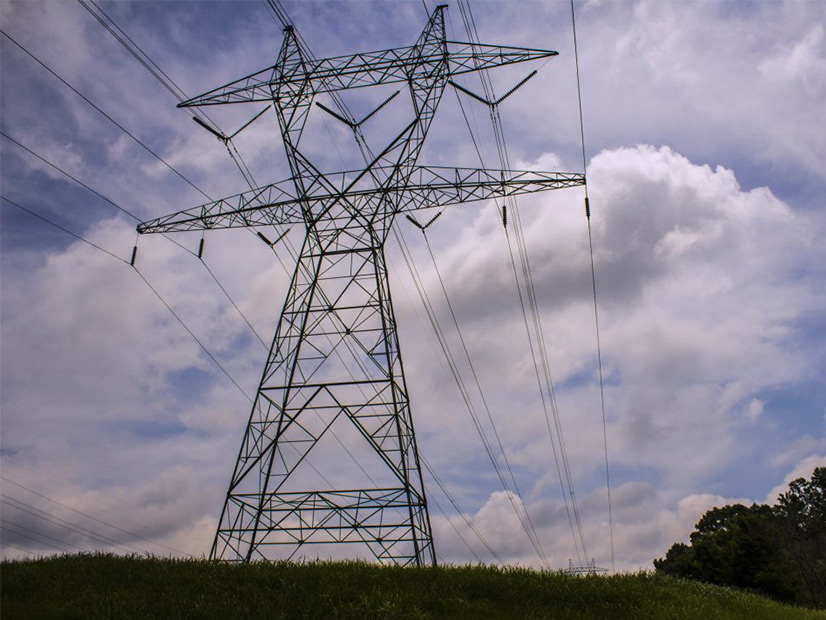Southern regulators this week didn’t disguise their distaste for MISO’s long-range transmission plan, with one Mississippi regulator drawing comparisons to the much-maligned Entergy System Agreement.
The contentious exchange occurred during Entergy’s Regional State Committee (ERSC) meeting July 20. The meeting was held less than a week after some transmission owners and the Environmental Sector suggested MISO adopt a subregional postage stamp rate. They proposed MISO devise separate postage stamp rates for the Midwest and South to split some costs of its long-range transmission plan. (See MISO Members Revive Debate over ‘Postage Stamp’ Cost Allocation.)
Mississippi Public Service Commissioner Brandon Presley said the postage stamp proposal seemed — “God forbid” — reminiscent of the now-terminated Entergy System Agreement, which allocated production costs among Entergy’s half dozen operating companies under its multistate system from 1982 until 2013. Interpretation of the system agreement has been a source of disagreement at the FERC level for more than a decade. (See La. PSC Complaints Denied in Entergy System Disputes.)
“I’m old enough to remember … the reason this committee was formed,” Presley told other MISO South stakeholders at the ERSC.
He said a postage stamp rate would force some states to pay for the “political choices” of renewable energy goals of other states.
“Tell me where I’m wrong,” Presley said.
MISO Executive Director of System Planning Aubrey Johnson said MISO’s long-term planning is simply based on members’ plans. Currently, more than 95% of MISO members have carbon emissions reduction goals.
Johnson also said MISO South players could advance their own cost-sharing proposals for the long-range transmission plan.
Entergy itself has a net-zero emissions goal by 2050. Entergy Texas CEO Sallie Rainer has said that meeting the goal will initially require replacing coal with solar.
“I think post-2030, it’s going to be all about technology [innovation] helping us,” Rainer said during the Gulf Coast Power Association’s spring conference in April. She said that Entergy is investigating using carbon capture and burning renewable-created hydrogen at its newer natural gas plants at night when renewables aren’t available.
Presley said having reservations about cost allocation on MISO’s long-range plan doesn’t equate to an anti-environmental sentiment.
“From my perspective, that couldn’t be any further from the truth,” he said. “When some of us ask these types of questions about cost allocation, [some say], ‘You must be against goals related to renewable energy development.’ … If you want to have a dictatorship, we’ll stand up and salute MISO. But that’s not how this works.”
“I’m just throwing up the cautionary flag very nicely and politely,” Presley said, adding that a postage stamp treatment could begin to “smell like and look like an Entergy System Agreement.”
“I don’t think anyone wants to go back to those nightmares,” he said, adding that MISO should take care to avoid the “undue and unjustified spreading of costs to just everyone.”
“The increasing of electric rates in Mississippi hurts us more because we’ve got less money than other states,” Presley explained.
Noel Darce, counsel for the Louisiana Public Service Commission, pressed on whether MISO’s long-range plan is really intended to facilitate new wind generation built far from load centers.
“I would not frame it that way,” Johnson responded. He said MISO’s modeling has indicated new resources will be sited all over the footprint, though he acknowledged that some renewable resources would cluster where natural conditions are more optimal.
“Our message throughout all this is: ‘It’s going to be expensive.’ … As we see today, the retirements are actually outpacing our predictions,” Johnson said.
Conservatively, MISO expects 77 GW of thermal generation retirements and 120 GW of mostly renewable additions over the next two decades, Johnson said. He said the added generation will double MISO’s current capacity supply.
Johnson said MISO is not trying to “lean into” one generation technology over another.
“This has to do with member goals. This is about our members’ plans. This is about ensuring the system holds up over the 8,760 hours in a year,” Johnson said.
To accommodate a transformed resource mix, Johnson said MISO must do more than the “very linear” and largely local need-planning focus of MISO’s annual Transmission Expansion Plans.
“With the long-term transmission plan, that’s not how we expect things to flow,” Johnson said. “We recognize that this will be a challenging process.”
Johnson also said MISO’s long-term transmission planning might necessitate upgrades on the lower-voltage system, as the increased transfers could affect smaller systems.
Werner Roth, economist with the Public Utility Commission of Texas, asked if MISO is willing to consider separate cost allocation methodologies for MISO South versus MISO Midwest.
Johnson said MISO will consider alterations, where appropriate, between the regions.
“Ultimately, what we believe is the best cost allocation is the one the most can agree on,” Johnson said.
Johnson said MISO has not yet identified projects that could be readied for the RTO’s approval by the end of this year. He also said the RTO has yet to tackle solution ideas that would directly address the Midwest-South transfer constraint. The subregional postage stamp proposal is predicated on a continued limited transfer capability between Midwest and South.
So far in 2021, flows on the limit moved North-to-South 57% of the time. MISO Independent Market Monitor Jason Fogarty said flows bind most often in the South-to-North direction. MISO’s agreement with SPP and other neighbors restricts flows to 2,500 MW in the South-to-North direction and 3,000 MW in the North-to-South direction.
MISO will hold another stakeholder workshop on its long-range plan July 30.
At an Organization of MISO States meeting on July 21, North Dakota Public Service Commissioner Julie Fedorchak voiced apprehension over her state funding transmission projects that are “hundreds of miles away.”
“Signing on to cost allocation without knowing the impacts to our ratepayers is problematic,” Illinois Commerce Commission Chairman Carrie Zalewski agreed.




